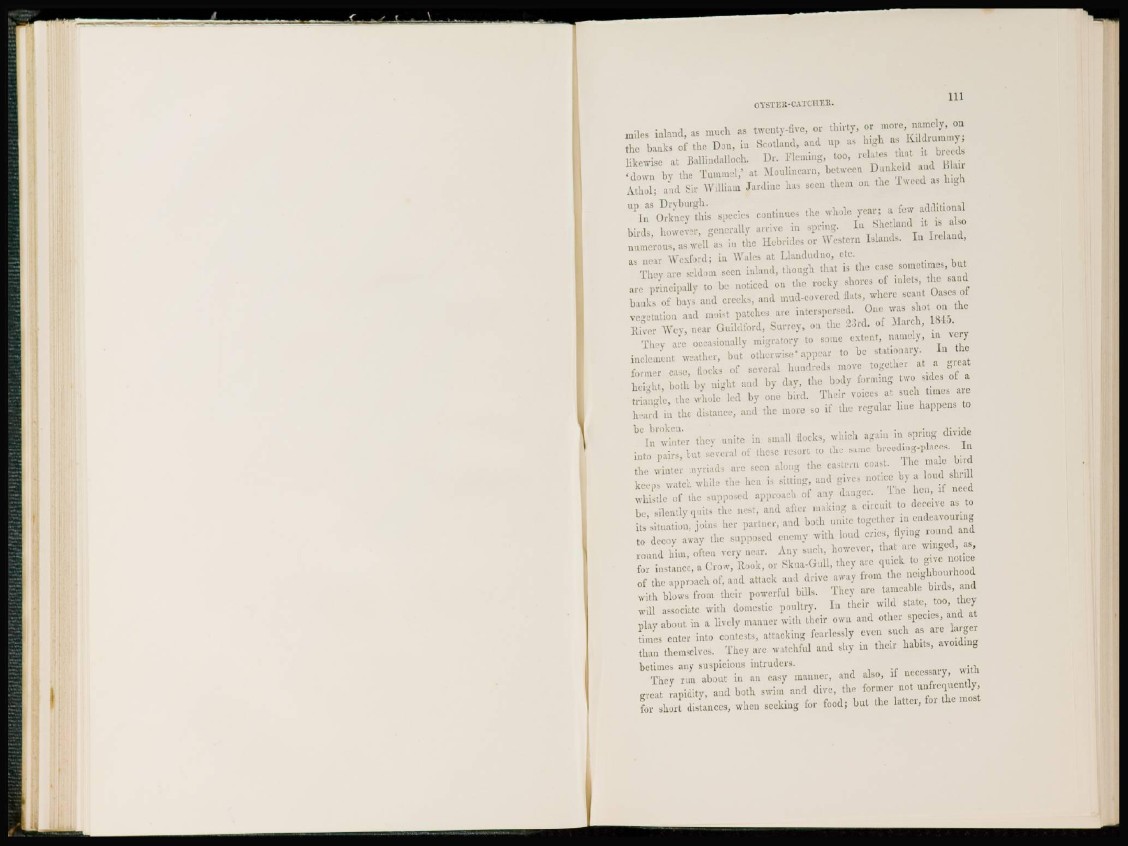
OTSTEK-CATCHEE. I l l
miles inland, as much as twenty-five, or thirty, or more, namely, on
the banks of the Don, in Scotland, and up as high as Kildrummy;
likewise at Balliudalloeh. Dr. Fleming, too, relates that it breeds
'down by the Tuinmel,* at Moulincarn, between Dunkeld and Blair
Athol; and Sir William Jardinc has seen them on the Tweed as high
up as Dryburgh.
In Orkney this species continues the whole year; a few additional
birds, however, generally arrive in spring. In Shetland it is also
numerous, as well as in the Hebrides or Western Islands. In Ireland,
as near Wexford; in Wales at Llandudno, etc.
They are seldom seen inland, though that is the case sometimes, but
arc principally to be noticed on the rocky shores of inlets, the sand
banks of bays and creeks, and mud-covered flats, where scant Oases of
vegetation and moist patches are interspersed. One was shot on the
River Wey, near Guildford, Surrey, on the :2-3rd. of .March, 1845.
They are occasionally migratory to some extent, namely, in very
inclement weather, but otherwise* appear to be stationary. In the
former case, flocks of several hundreds move together at a great
height, both by night and by day, the body forming two sides of a
triangle, the whole led by one bird. Their voices at such times arc
heard in the distance, and the more so if the regular lino happens to
be broken.
In winter they unite in small flocks, which again in spring divide
into pairs, but several of these resort to the same breeding-places. In
the winter myriads arc seen along the eastern coast. The male bird
keeps watch while the hen is sitting, and gives notice by a loud shrill
whistle of the supposed approach of any danger. The hen, if need
be, silently quits the nest, and after making a circuit to deceive as to
its situation, joins her partner, and both unite together in endeavouring
to decoy away the supposed enemy with loud cries, flying round and
round him, often very near. Any such, however , that are winged, as,
for instance, a Crow, Rook, or Skua-Gull, they are quick to give notice
of the approach of, and attack and drive away from the neighbourhood
with blows from their powerful bills. They are tameable birds, and
will associate with domestic poultry. In their wild state, too, they
play about in a lively manner with their own and other species, and at
times enter into contests, attacking fearlessly even such as arc larger
than themselves. They are watchful and shy in their habits, avoiding
betimes any suspicious intruders.
They run about in an easy manner, and also, if necessary, with
great rapidity, and both swim and dive, the former not unfrequently,
for short distances, when seeking for food; but the latter, for the most